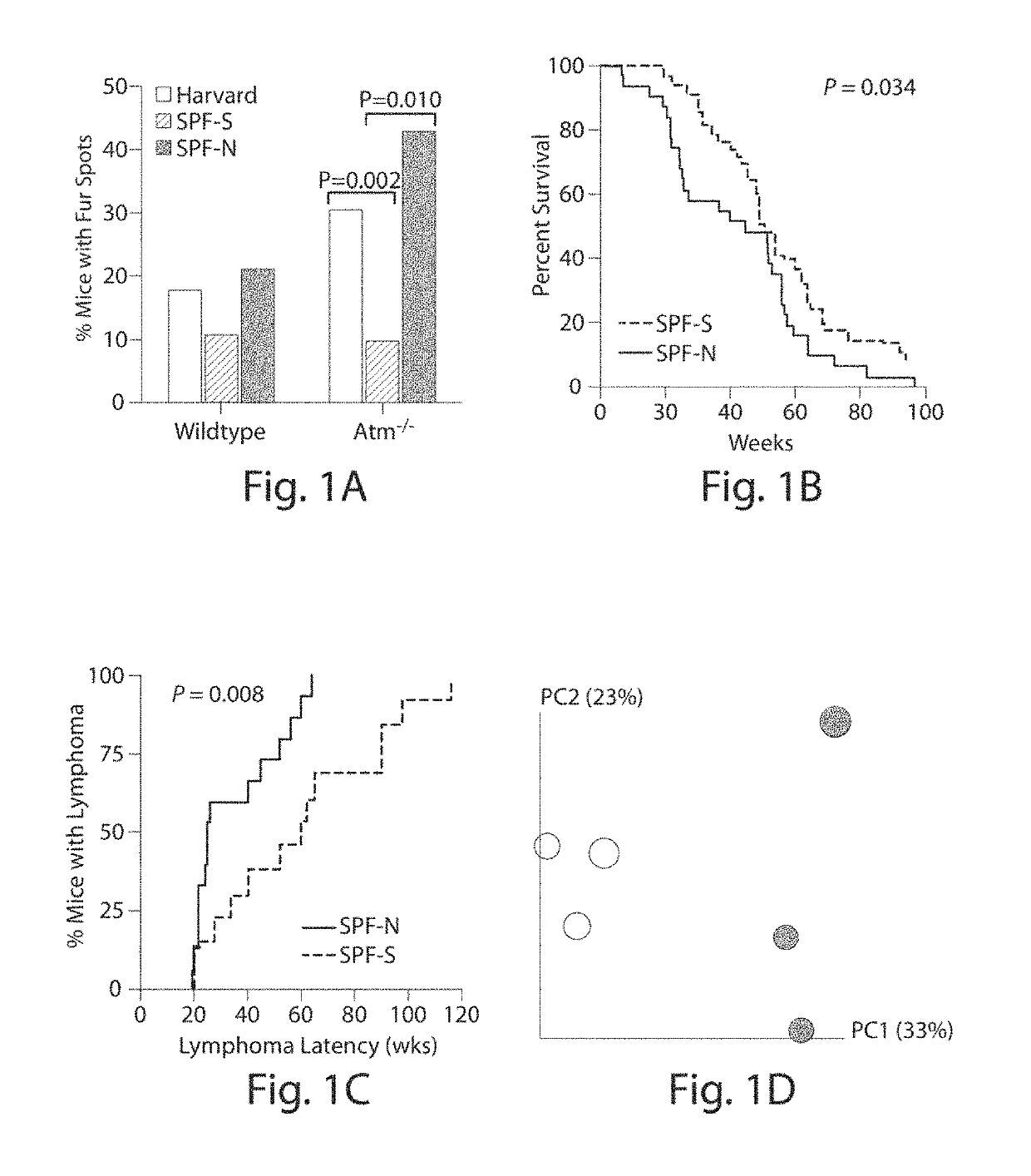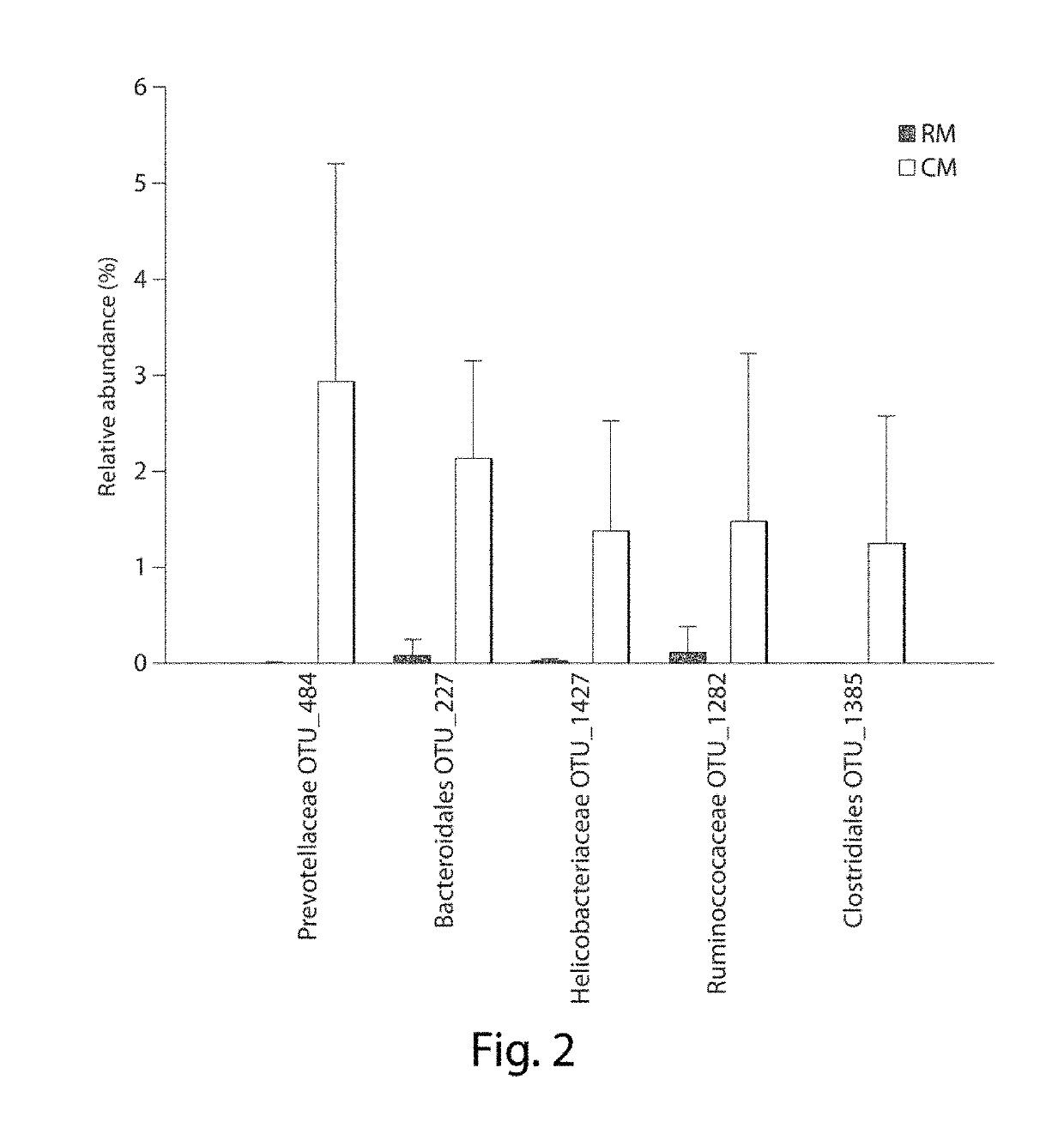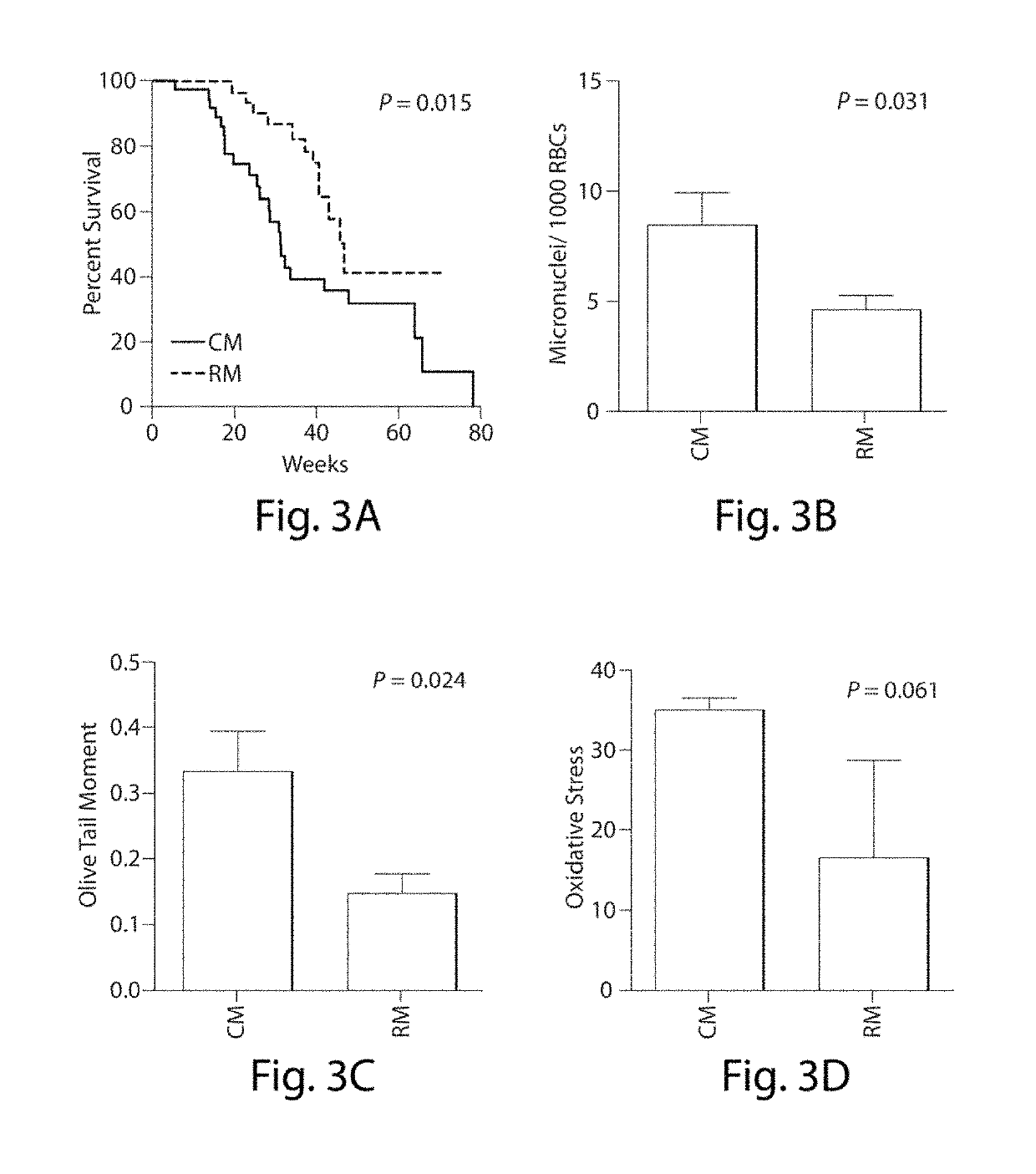Compositions and methods for promoting growth of beneficial microbes to treat or prevent disease or prolong life
- Summary
- Abstract
- Description
- Claims
- Application Information
AI Technical Summary
Benefits of technology
Problems solved by technology
Method used
Image
Examples
example a
xperimental Procedures
[0352]1. Animal Housing and Husbandry
[0353]Atm− / − mice were obtained by intercrossing Atm+ / − mice and identified by genotyping as described (Liao et al., 1999, Mol Cell Biol 19:3095-3102). Mice were housed under standard conditions in accordance with the Animal Research Committee at UCLA. Mice were housed under two types of specific pathogen free (SPF) conditions, where either sterile (SPF-S) or non-sterile (SPF-N) food, water, and bedding were employed. Atm− / − mice harboring RM and CM microbiota were created by rederivation as described in Fujiwara et al. (2008, J Immunol 180:5843-5852) and by antibiotic treatment (Rakoff-Nahoum et al., 2004, Cell 118:229-241) followed by orogastric gavage of CM feces, respectively.
[0354]2. Mouse Longevity Studies
[0355]For the Atm− / − mice longevity studies, animals were kept until they were found dead, developed signs of tumors or became sick, at which time they were euthanized. Mice were sent to a veterinary pathologist for n...
example d
a in CM and RM Mice are Distinct
[0396]A high throughput sequence analysis revealed broad taxonomic differences in bacterial rRNA gene composition from the intestinal mucosa of CM and RM mice. This analysis was performed because all prior investigations of CM and RM microbiota were relatively shallow in depth (Fujiwara et al., 2008, J Immunol 180:5843-5852; Presley et al., 2010, Appl Environ Micrbiol 76:936-941; Wei et al., 2010, J Immunol 184:1218-1226). A weighted UniFrac analysis showed distinct grouping and tighter clustering in RM than CM mice (FIGS. 4A and 4B). These results are consistent with the manner in which RM mice were created and maintained, including isolated housing conditions and initial oral inoculum containing relatively few bacterial taxa (Fujiwara et al., 2008, J Immunol 180:5843-5852). The majority of rRNA gene sequences were classified into the phyla Bacteroidetes (dark shaded) and Firmicutes (light shaded) (FIG. 4C). However, the most consistent phyla-level d...
example j
which are More Prevalent in RM Mice can be Differentiated from Bacteria which are More Prevalent in CM Mice and Provide Candidates to Target with Pre-, Pro-, and Antibiotics
[0409]Illumina and ITS rRNA gene analyses have identified candidate bacteria which may have positive effects on longevity and cancer latency (Table 7, left column (A)) as well as candidate bacteria which may have negative effects (Table 7, right column (B)). These lists provide a starting point to narrow down the types and / or species of bacteria which are detrimental or beneficial to the health of people.
[0410]
TABLE 7Candidate bacteria having a positive (A) or negativeeffect (B) on carcinogenesis and longevity.A. Bacteria more abundant inB. Bacteria more abundant inRM than CM mice (p CM than RM mice (p (Potentially beneficial bacteria)(Potentially detrimental bacteria)1.Lactobacillus johnsonii1.Dysgonomonas gadei2.Clostridium polysaccharolyticum2.Prevotellaceaebacterium P4P_623.Clostridium populeti3.Belliella sp....
PUM
 Login to View More
Login to View More Abstract
Description
Claims
Application Information
 Login to View More
Login to View More - R&D
- Intellectual Property
- Life Sciences
- Materials
- Tech Scout
- Unparalleled Data Quality
- Higher Quality Content
- 60% Fewer Hallucinations
Browse by: Latest US Patents, China's latest patents, Technical Efficacy Thesaurus, Application Domain, Technology Topic, Popular Technical Reports.
© 2025 PatSnap. All rights reserved.Legal|Privacy policy|Modern Slavery Act Transparency Statement|Sitemap|About US| Contact US: help@patsnap.com



